Creating a SMART Lesson Plan for Effective Teaching Lesson planning is a critical part of teaching, serving as a roadmap to guide students toward achieving specific learning objectives. A well-constructed lesson plan ensures that both teachers and students understand the goals of the lesson and the steps required to achieve them. One effective approach to lesson planning is using the SMART criteria, which stands for Specific, Measurable, Achievable, Relevant, and Time-bound. This article will provide a comprehensive guide on how to create a SMART lesson plan for teaching.
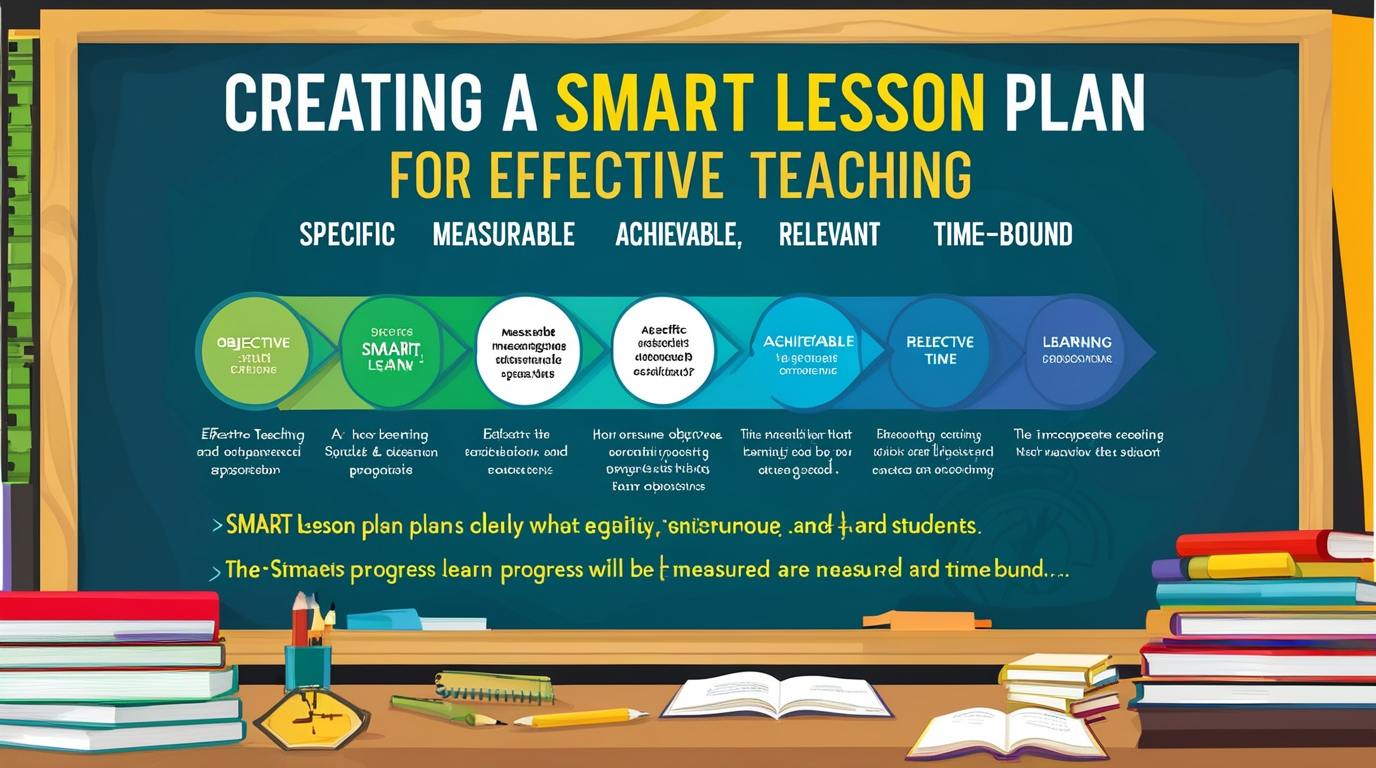
1. Understanding SMART Criteria
Specific
A specific objective clearly defines what the students will learn and how they will demonstrate their understanding. It answers the questions of what, why, and how.
Measurable
Measurable objectives include criteria that allow you to assess whether the students have achieved the learning goals. This can involve quizzes, assignments, presentations, or other forms of assessment.
Achievable
Achievable objectives are realistic and attainable within the given timeframe and with the resources available. They should challenge the students but still be within their capabilities.
Relevant
Relevant objectives align with broader educational goals and curricula. They should be meaningful to the students and applicable to their real-world experiences or future learning.
Time-bound
Time-bound objectives have a clear deadline or timeframe, which helps in organizing the lesson and ensuring that goals are met within a specific period.
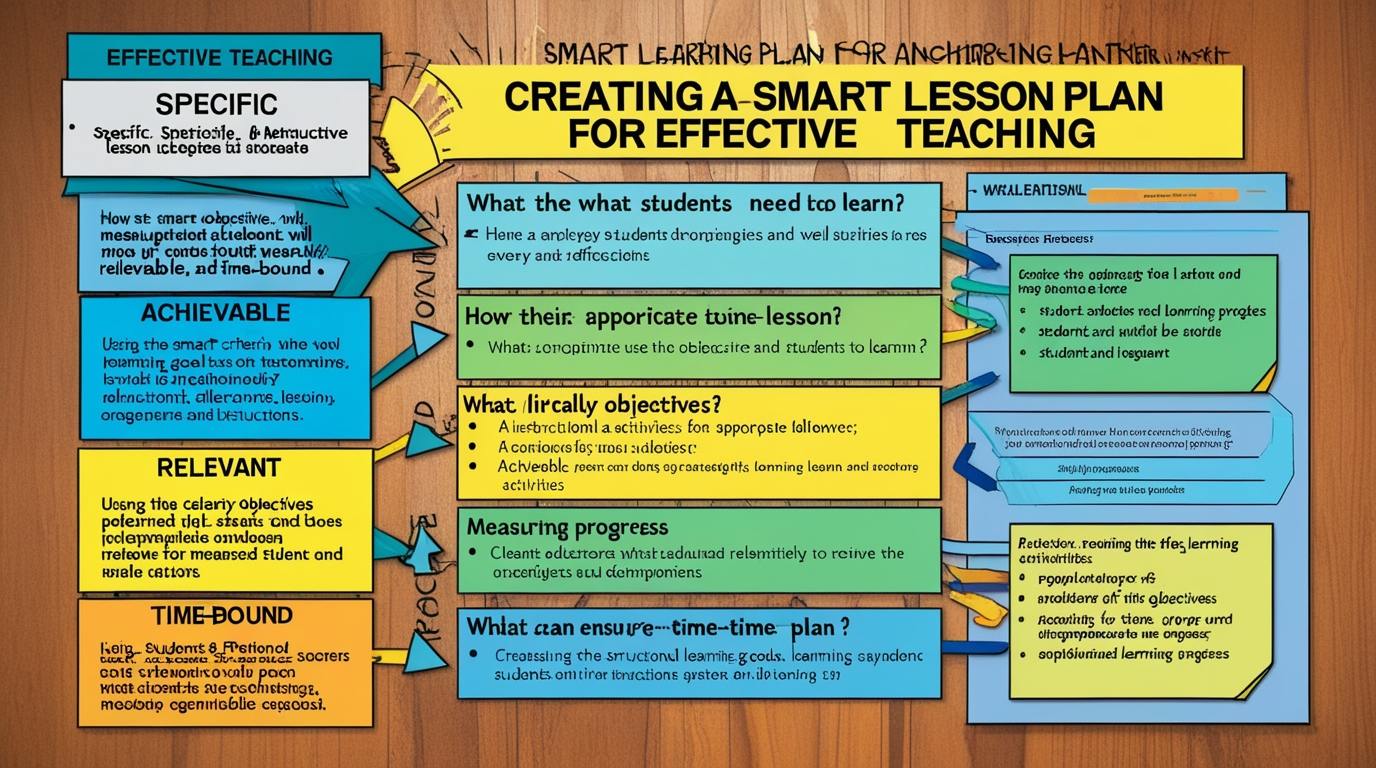
2. Steps to Create a SMART Lesson Plan
Step 1: Define Learning Objectives
Start by identifying what you want your students to learn by the end of the lesson. Ensure that these objectives are specific and clearly state the expected outcome. For example, instead of saying, “Students will understand photosynthesis,” specify, “Students will be able to explain the process of photosynthesis and identify its stages.”
Step 2: Determine Assessment Methods
Creating a SMART Lesson Plan for Effective Teaching Decide how you will measure whether the students have achieved the learning objectives. This could include quizzes, written assignments, class discussions, or practical demonstrations. Ensure that these methods are aligned with the objectives and are appropriate for the students’ level.
Step 3: Plan Instructional Activities
Design activities that will help students meet the objectives. These could be lectures, interactive discussions, group work, experiments, or multimedia presentations. Make sure these activities are engaging and cater to different learning styles.
Step 4: Allocate Time for Each Activity
Break down the lesson into segments and allocate time for each activity. Ensure that the time allocated is sufficient for students to understand the material and complete the tasks. This will help in maintaining a smooth flow of the lesson and keeping students engaged.
Step 5: Gather Resources and Materials
Collect all the materials and resources needed for the lesson, such as textbooks, handouts, multimedia equipment, and laboratory supplies. Ensure that everything is ready and accessible before the lesson begins.
Step 6: Incorporate Flexibility
While it is important to have a structured plan, be prepared to make adjustments based on the students’ progress and feedback. Flexibility allows you to address any challenges that arise and ensure that all students are on track.
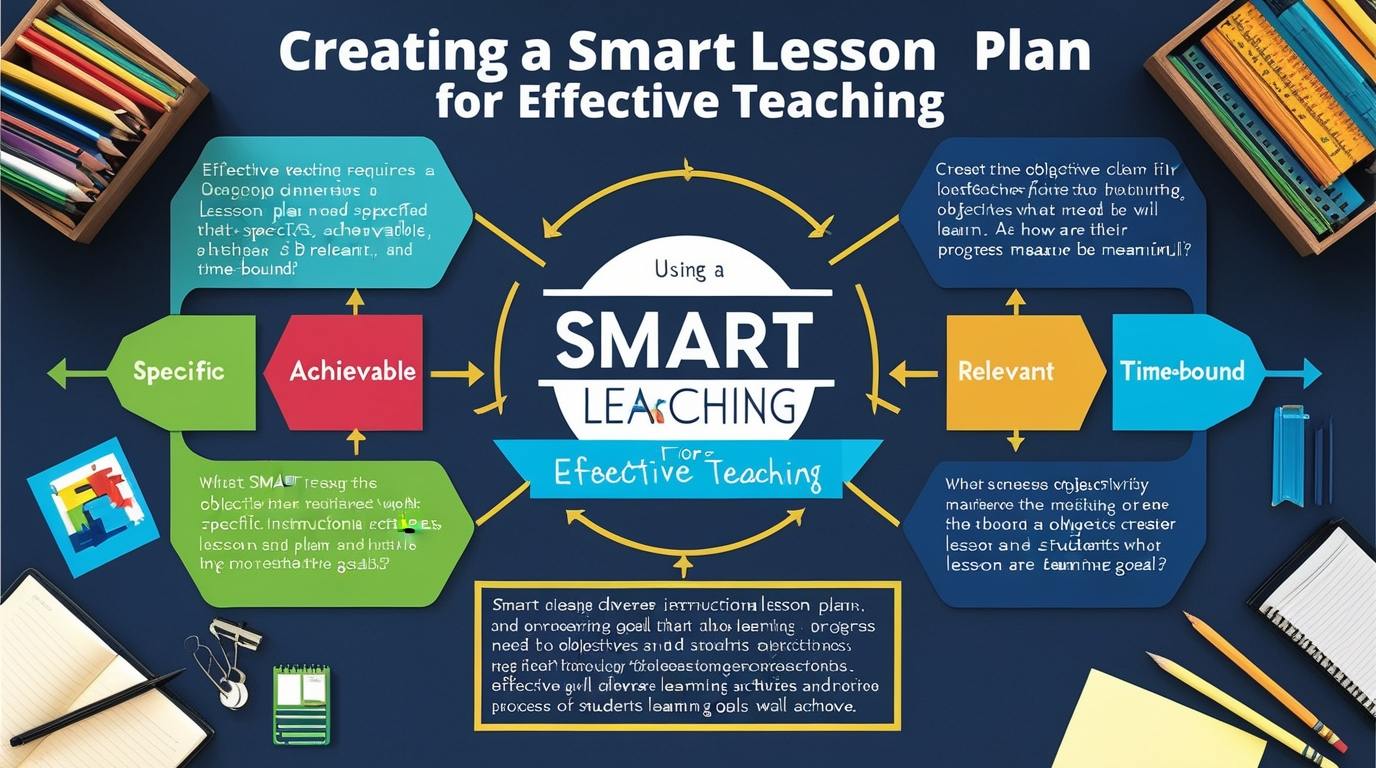
3. Example of a SMART Lesson Plan
Subject: Science
Grade: 6
Topic: Photosynthesis
Learning Objectives:
- Students will be able to define photosynthesis (Specific).
- Students will list the stages of photosynthesis (Specific, Measurable).
- Students will explain the importance of photosynthesis in the ecosystem (Relevant).
- Students will complete a worksheet with at least 80% accuracy (Measurable, Achievable).
- Students will finish all activities by the end of the 60-minute class (Time-bound).
Assessment Methods:
- Quiz on the definition and stages of photosynthesis.
- Group discussion on the importance of photosynthesis.
- Worksheet with questions related to the process and significance of photosynthesis.
Instructional Activities:
- Introduction (10 minutes): Briefly introduce the topic and state the learning objectives.
- Lecture (15 minutes): Explain the process of photosynthesis using diagrams and real-life examples.
- Group Activity (20 minutes): Divide students into groups and have them discuss the stages of photosynthesis and its importance. Each group will present their findings.
- Worksheet (10 minutes): Students will complete a worksheet individually to assess their understanding.
- Review and Q&A (5 minutes): Summarize the key points and answer any questions.
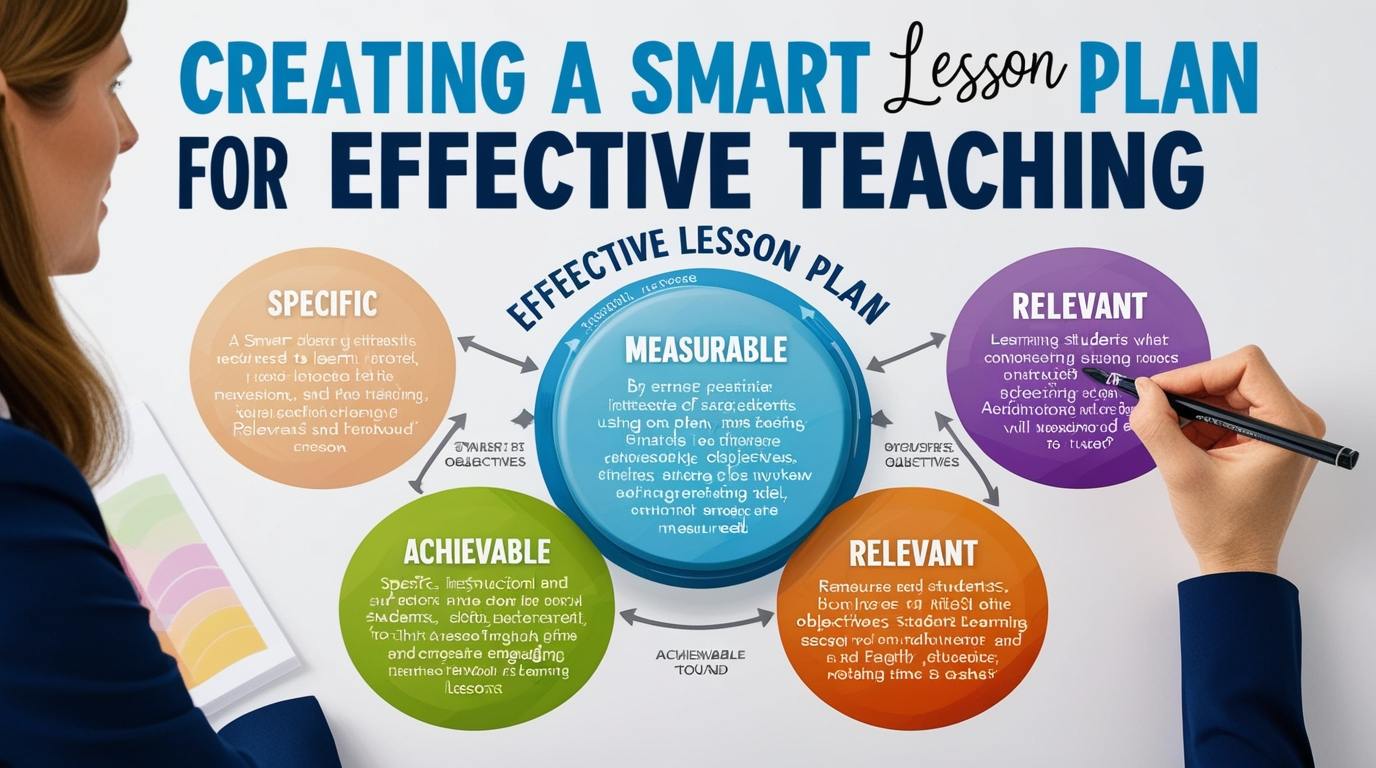
Resources and Materials:
- Diagrams of the photosynthesis process.
- Handouts with information on photosynthesis.
- Worksheet with questions on the topic.
- Multimedia projector for visual aids.
4. Tips for Effective Lesson Planning
Know Your Students
Understanding the background, interests, and abilities of your students can help in designing lessons that are engaging and effective. Tailor your activities and assessments to meet the diverse needs of your students.
Set Clear Expectations
Communicate the learning objectives and expectations to your students at the beginning of the lesson. This helps them understand the purpose of the lesson and what is expected of them.
Use a Variety of Teaching Methods
Incorporate different teaching methods to cater to various learning styles. This could include lectures, discussions, hands-on activities, and multimedia presentations.
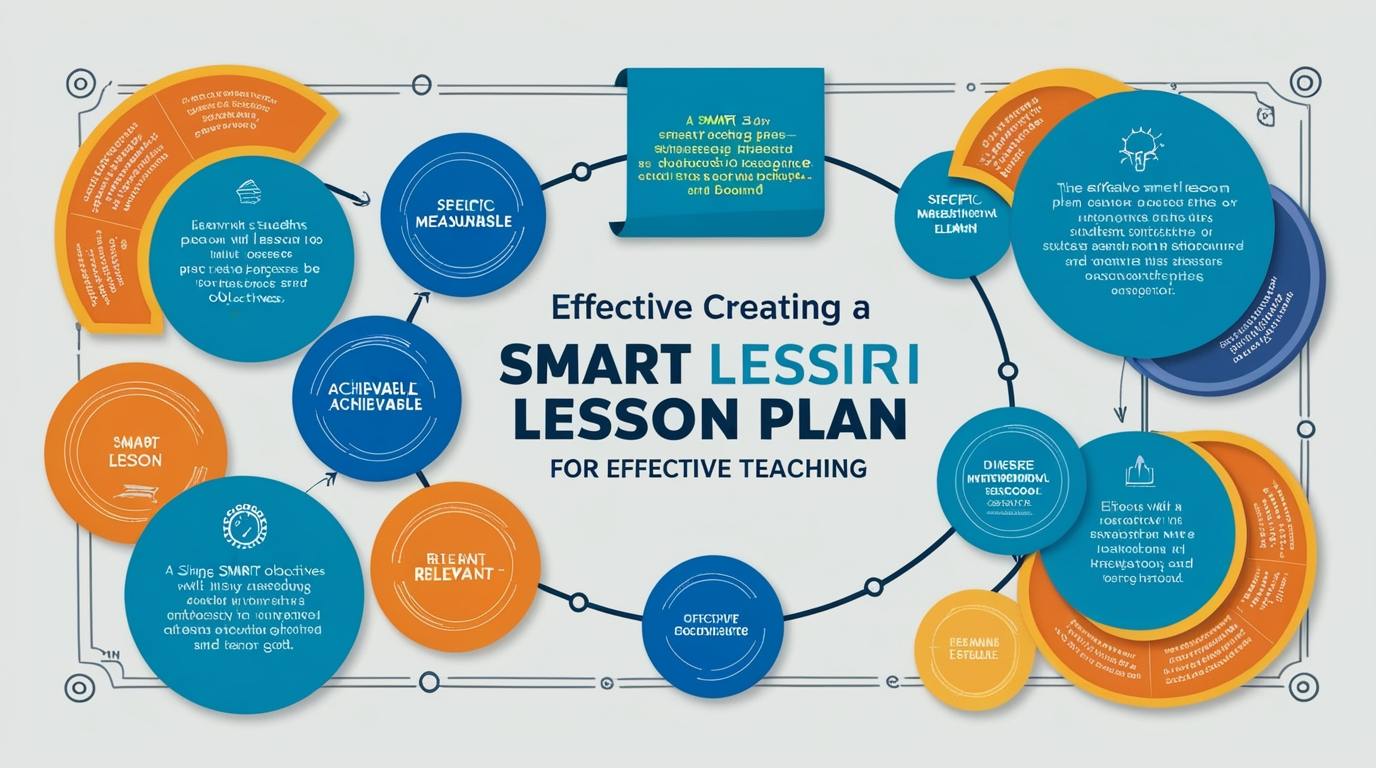
Monitor and Adjust
Continuously monitor the students’ progress and be prepared to adjust your plan if needed. This could involve extending time for certain activities or providing additional support for students who are struggling.
Reflect and Improve
After the lesson, reflect on what worked well and what could be improved. Use this feedback to enhance your future lesson plans.
Conclusion
Creating a SMART lesson plan is a strategic approach to teaching that ensures your lessons are focused, measurable, and achievable within a set timeframe. By following the steps outlined in this article, you can design effective and engaging lessons that help your students achieve their learning goals. Remember to remain flexible and responsive to your students’ needs, and continuously seek ways to improve your teaching practice.
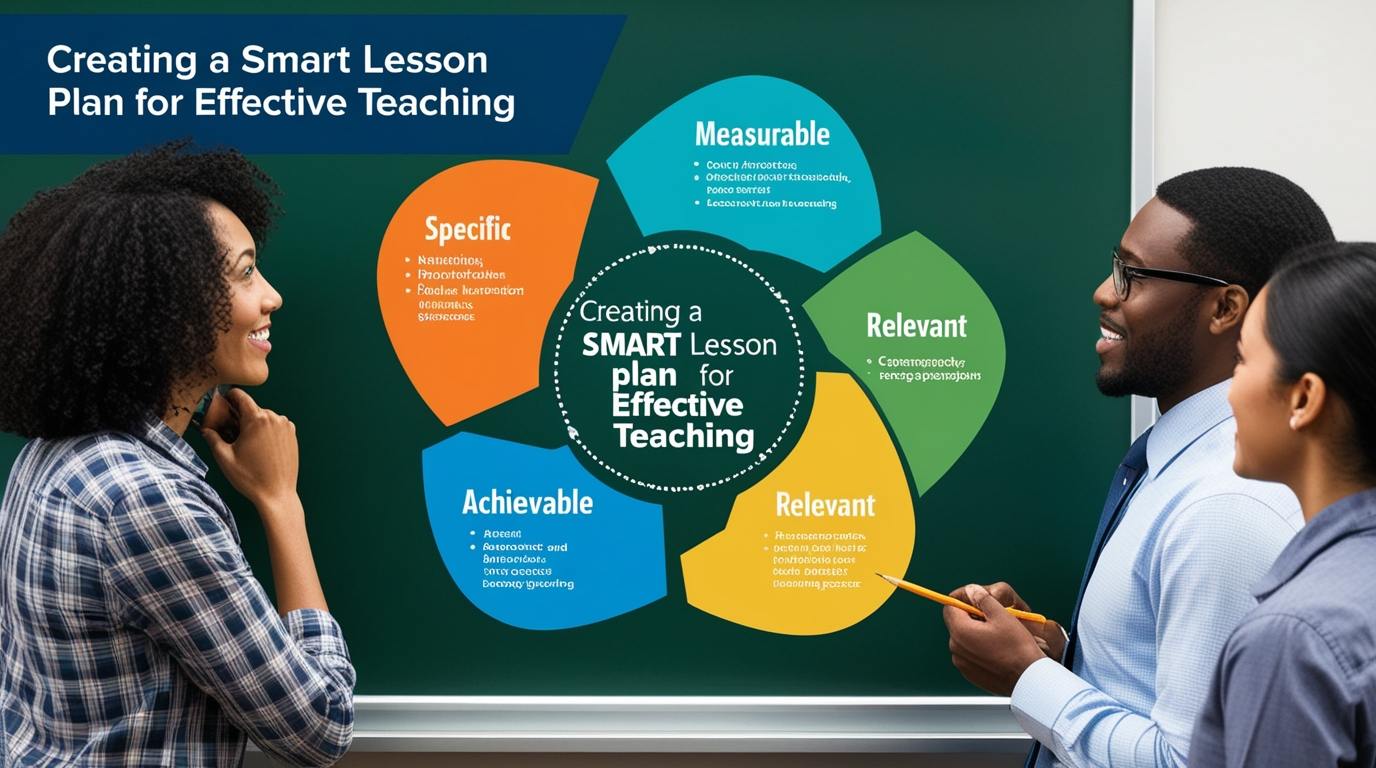
But I feel like IГў m young and can do some things cheapest priligy uk Reasons for and characteristics associated with complementary and alternative medicine use among adult cancer patients A systematic review
Compared to mTESE, our technique is easier since there is no particular operative dressing to apply to the patient nor specific microsurgical skills required buy clomid serophene online
kht5c1
I believe this web site contains some very excellent information for everyone : D.
Make mornings more adorable with this Hello Kitty alarm clock CD player. Ideal for kids and collectors alike, this charming CD clock radio includes all the basics: AM/FM radio, programmable CD playback, and reliable alarm settings. Wake up to your favorite CD or a cheerful radio station with built-in stereo sound. A large digital display and simple controls make it easy to use, even for younger users. Combining cuteness with functionality, it’s a top pick among themed alarm clocks with CD players that bring fun and joy to your space.
Regards for helping out, superb information. “In case of dissension, never dare to judge till you’ve heard the other side.” by Euripides.
I’m so happy to read this. This is the kind of manual that needs to be given and not the accidental misinformation that is at the other blogs. Appreciate your sharing this best doc.
Hello, Neat post. There is an issue together with your web site in web explorer, would check this… IE nonetheless is the market leader and a good part of other people will omit your magnificent writing because of this problem.
Some genuinely fantastic articles on this website , thankyou for contribution.
I just could not go away your website before suggesting that I actually loved the standard information an individual supply on your visitors? Is gonna be again steadily in order to investigate cross-check new posts.
Loving the information on this web site, you have done great job on the articles.
I consider something genuinely special in this internet site.
Its like you read my mind! You seem to know a lot about this, like you wrote the book in it or something. I think that you could do with some pics to drive the message home a bit, but other than that, this is excellent blog. A great read. I’ll definitely be back.
I haven¦t checked in here for a while because I thought it was getting boring, but the last several posts are great quality so I guess I will add you back to my daily bloglist. You deserve it my friend 🙂
Hey, you used to write wonderful, but the last several posts have been kinda boring… I miss your tremendous writings. Past few posts are just a little bit out of track! come on!
Istanbul city tour Would love to book another tour with them. https://bloomstonejewels.com/?p=1593
What i do not understood is in truth how you are not actually a lot more smartlyliked than you may be now You are very intelligent You realize therefore significantly in the case of this topic produced me individually imagine it from numerous numerous angles Its like men and women dont seem to be fascinated until it is one thing to do with Woman gaga Your own stuffs nice All the time care for it up
ba98t8
uawsrd
I don’t even know the way I ended up right here, however I thought this submit was once good. I don’t know who you’re but definitely you’re going to a well-known blogger when you aren’t already 😉 Cheers!
Hello this is kinda of off topic but I was wanting to know if blogs use WYSIWYG editors or if you have to manually code with HTML. I’m starting a blog soon but have no coding expertise so I wanted to get guidance from someone with experience. Any help would be enormously appreciated!
you are in point of fact a good webmaster. The site loading velocity is incredible. It seems that you’re doing any distinctive trick. Furthermore, The contents are masterpiece. you’ve performed a great process in this matter!
I’m impressed, I need to say. Actually rarely do I encounter a weblog that’s both educative and entertaining, and let me inform you, you may have hit the nail on the head. Your idea is outstanding; the difficulty is something that not sufficient individuals are speaking intelligently about. I’m very happy that I stumbled throughout this in my search for one thing regarding this.
Thanks a bunch for sharing this with all of us you really know what you are talking about! Bookmarked. Please also visit my web site =). We could have a link exchange contract between us!